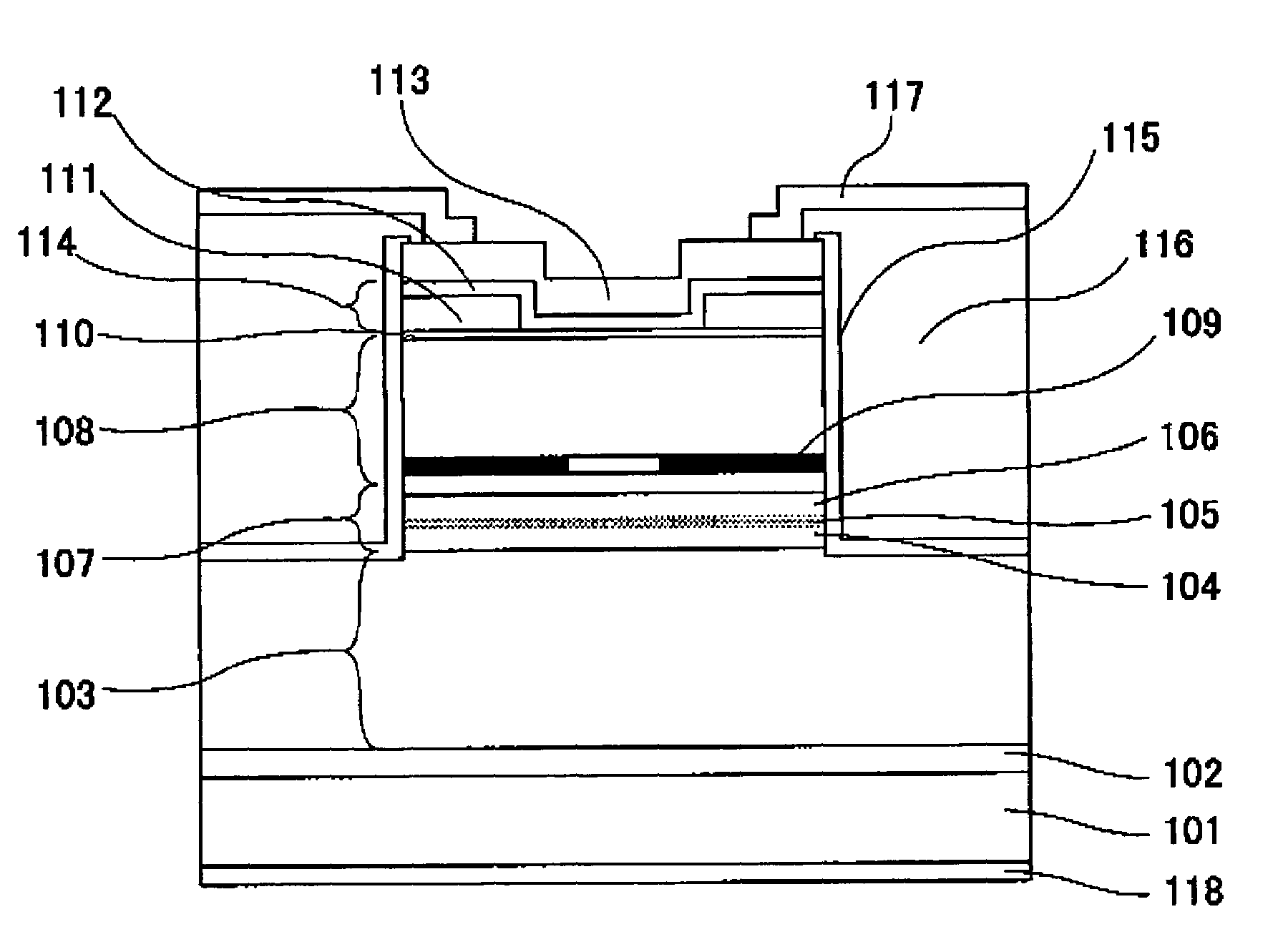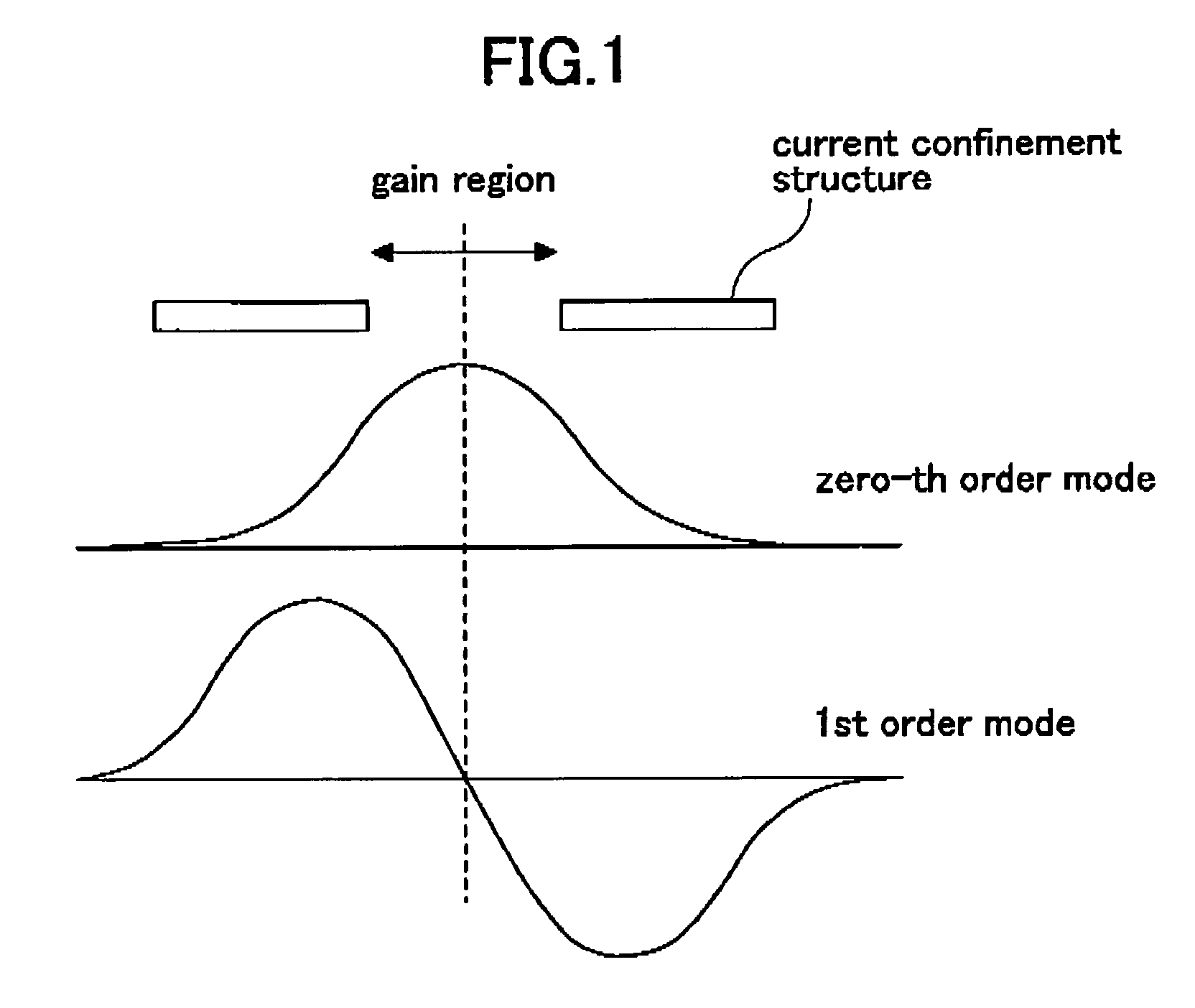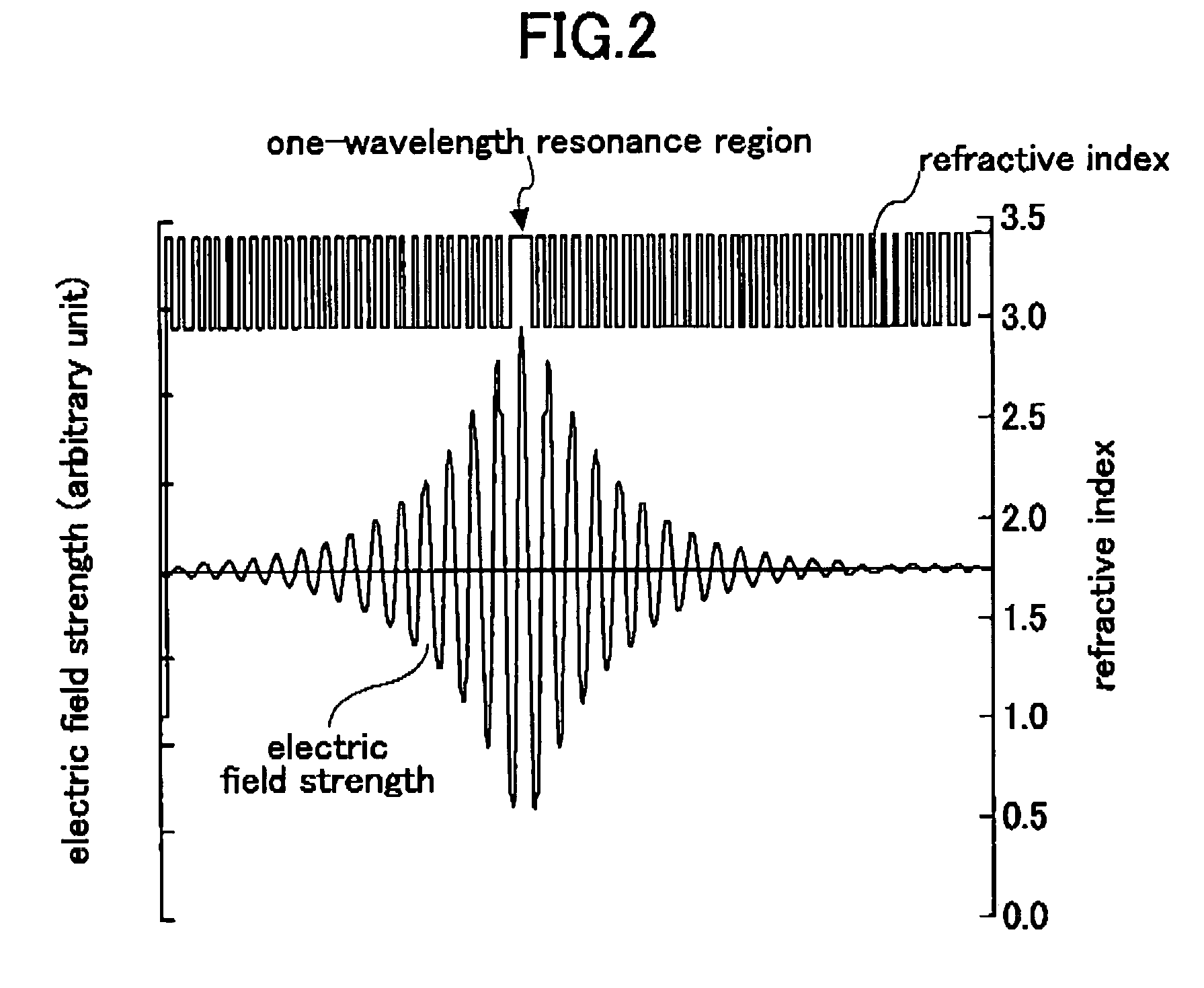Surface emitting laser device and production method
a laser device and surface technology, applied in the direction of semiconductor lasers, laser details, electrical devices, etc., can solve the problems of high output of surface emitting lasers, rise of heat generated in laser devices, and difficult to maintain the oscillation in single fundamental transverse mode, so as to facilitate the second resonance region, easy to fabricate a surface emitting laser device, and high output
- Summary
- Abstract
- Description
- Claims
- Application Information
AI Technical Summary
Benefits of technology
Problems solved by technology
Method used
Image
Examples
first embodiment
[0098]The present embodiment discloses a surface emitting laser device which includes a first resonance region that has an active layer and spacer layers on two sides of the active layer, two distributed Bragg reflectors that sandwich the resonance region and face each other with each of the distributed Bragg reflectors having periodically stacked low refractive index layers and high refractive index layers, and a current confinement structure that defines a current injection region for injecting a current into the active layer. In the surface emitting laser device, at least one of the distributed Bragg reflectors includes a second resonance region, which is arranged in the current injection region excluding a predetermined region surrounding the center of the current injection region. For example, the center is that of a cross-section of the current injection region parallel to the substrate, for example, when the cross-section of the current injection region is a circle, a four-si...
second embodiment
[0125]The present embodiment discloses a surface emitting laser device which has a structure similar to that in the first embodiment. In addition, in the surface emitting laser device of the present embodiment, at least part of the range within a distance from the center of the current injection region is within a boundary of the current injection region, and the second resonance region partially spatially overlaps with the current injection region.
[0126]In the surface emitting laser device of the present embodiment, as described previously, because the second resonance region is provided in an area at the middle of the distributed Bragg reflector corresponding to the high order transverse modes, and because of the resonance action in the second resonance region, it is possible to highly efficiently increase the mirror loss for the high order transverse mode oscillation, and as a result, it is possible to efficiently suppress the high order transverse mode oscillation. Therefore, fo...
third embodiment
[0138]The present embodiment discloses a surface emitting laser device which has a structure similar to that in the first embodiment. In addition, in the surface emitting laser device of the present embodiment, the region without the second resonance region extends out of a boundary of the current injection region, which is defined by the current confinement structure.
[0139]In the surface emitting laser device of the present embodiment, as described previously, because the second resonance region is provided in an area at the middle of the distributed Bragg reflector corresponding to the high order transverse modes, and because of the resonance action in the second resonance region, it is possible to highly efficiently increase the mirror loss for the high order transverse mode oscillation, and thus to efficiently suppress the high order transverse mode oscillation.
[0140]Because the width of the fundamental transverse mode distribution approximately corresponds to the size of the cu...
PUM
 Login to View More
Login to View More Abstract
Description
Claims
Application Information
 Login to View More
Login to View More - R&D
- Intellectual Property
- Life Sciences
- Materials
- Tech Scout
- Unparalleled Data Quality
- Higher Quality Content
- 60% Fewer Hallucinations
Browse by: Latest US Patents, China's latest patents, Technical Efficacy Thesaurus, Application Domain, Technology Topic, Popular Technical Reports.
© 2025 PatSnap. All rights reserved.Legal|Privacy policy|Modern Slavery Act Transparency Statement|Sitemap|About US| Contact US: help@patsnap.com



